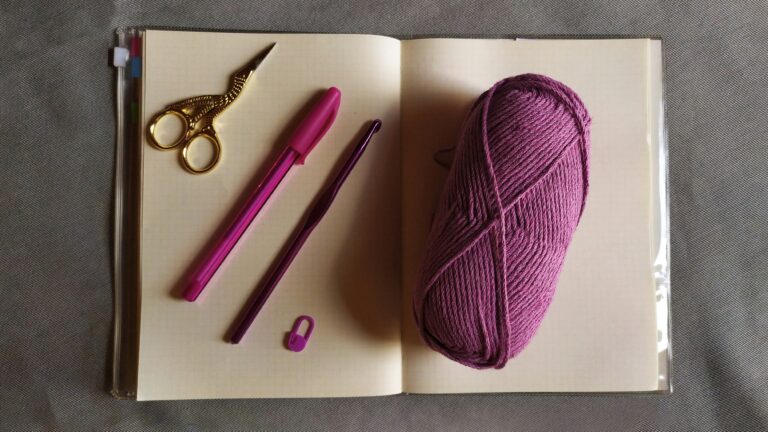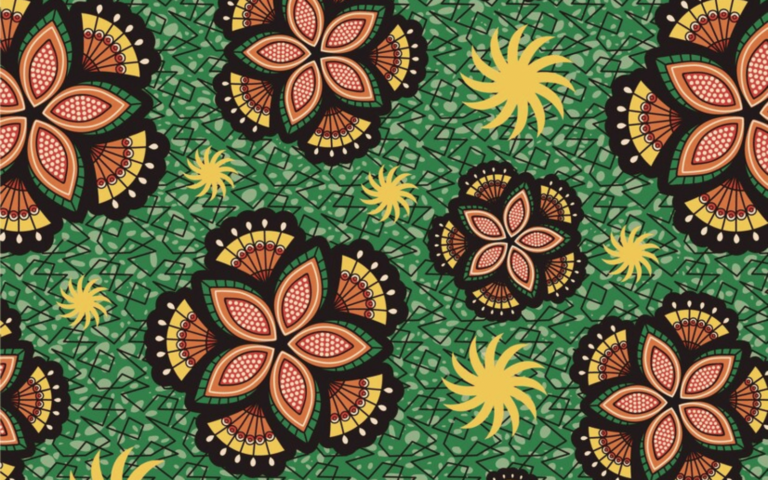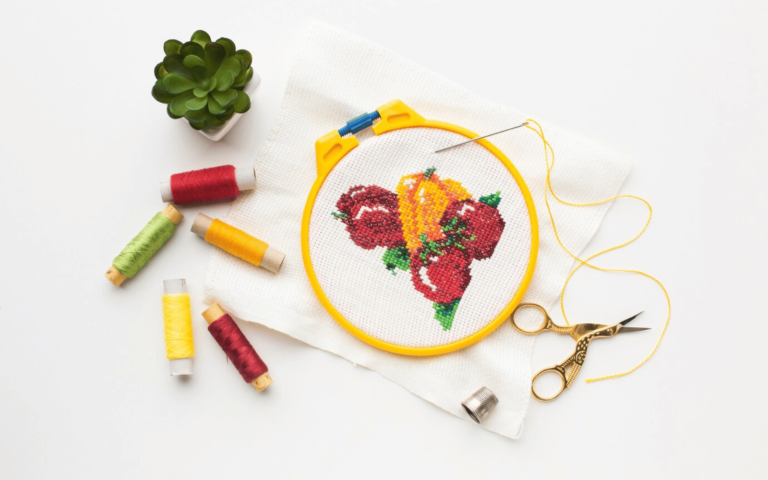Knitted Origami Design – New 2024 Art of Textile Innovation
Knitted Origami Design, an innovative blend of knitting and origami art forms, has emerged as a captivating craft. This opening analyzes the fascinating world where the meticulousness of knitting meets the precision of origami. Unlike traditional knitting or origami, this hybrid art form creates a unique tactile and visual experience. The appeal of knitted origami design lies in its ability to transform yarn into intricate, foldable structures, bringing a new dimension to textile art.
The allure of knitted origami design is not just in the end product but also in the process. This form of art requires patience, skill, and a deep understanding of both knitting and folding techniques. It represents a harmonious blend of two historically rich crafts, each with its own set of traditions and techniques. The intricate nature of this craft demands a high level of craftsmanship, making it a fulfilling pursuit for artists and hobbyists alike.
The evolution of knitted origami design is a testament to the ongoing innovation in the world of crafts. It reflects a growing trend in combining different art forms to create something unique and remarkable. The fusion of knitting and origami presents endless possibilities, enabling artists to push the boundaries of creativity and design.
As we delve deeper into the realm of knitted origami design, we uncover its unique characteristics, techniques, and applications. This craft not only offers an aesthetic appeal but also challenges the conventional norms of textile art, encouraging artists to reimagine the potential of yarn and fabric.
The History and Evolution
Knitted origami design, while a relatively new concept, is rooted in a rich history of both knitting and origami. The origins of knitting can be traced back thousands of years, with the earliest known examples dating from Egypt. Origami, the Japanese art of paper folding, has a history equally as rich, believed to have originated in the 17th century. The convergence of these two arts into knitted origami design marks a significant moment in the evolution of craft and design.
The journey of knitted origami design began as an experiment, where artists and crafters started incorporating folding techniques into knitted textiles. This fusion was inspired by a desire to add structure and dimension to the fluidity of knitted fabrics. The process involved creating patterns that allowed the knitted piece to be folded into various shapes, much like origami.
Pioneers in this field have played a role in shaping knitted origami design. Their innovative approach to combining these two distinct crafts paved the way for a new genre of textile art. These trailblazers have experimented with various techniques, from simple folds to complex patterns, expanding the boundaries of what can be achieved with yarn and needles.
The evolution of knitted origami design is ongoing, with new techniques and ideas continually emerging. This craft is being driven forward by a community of passionate artists who are dedicated to analyzing the possibilities of this unique fusion. As technology and materials evolve, so too does the potential of knitted origami design, promising an exciting future for this creative endeavor.
Understanding the Basics
Grasping the fundamentals of knitted origami design requires an understanding of both knitting and origami. This section discusses the basic principles and skills needed to start creating these unique designs. The foundation of this craft lies in the ability to knit a fabric that can hold folds and creases, much like paper in origami.
The primary skill in knitted origami design is knitting, which involves creating fabric by interlocking loops of yarn using needles. The complexity of the design dictates the knitting techniques required, ranging from basic knit and purl stitches to more advanced techniques like increases, decreases, and twisted stitches. These techniques allow for the creation of textured patterns that can be strategically folded and shaped.
Origami, the art of paper folding, is the second component. In knitted origami design, origami principles are adapted to work with the knitted fabric. This involves understanding how to create folds that will hold their shape in a more pliable material like yarn. The key here is to knit patterns that facilitate precise and clean folds, akin to origami.
For beginners in knitted origami design, it’s important to start with simple projects that combine basic knitting techniques with straightforward folds. This allows for a gradual build-up of skills and confidence. As one becomes more proficient, more complex designs can be attempted, incorporating intricate knitting patterns and elaborate origami folds.
Materials and Tools
Embarking on a knitted origami design project requires specific materials and tools. The choice of yarn is; it needs to be flexible enough for knitting but also sturdy enough to hold folds. Different yarn weights and sorts offer varying textures and stiffness, influencing the final appearance and functionality of the design.
Knitting needles are another essential tool. The size and sort of needle depend on the yarn weight and the desired fabric density. Circular needles are often preferred for larger projects due to their flexibility and ease of handling. Additionally, various auxiliary tools like stitch markers, tapestry needles, and blocking mats can be helpful.
The selection of materials can greatly influence the outcome of a knitted origami design project. For instance, stiffer yarns like wool blends can hold folds better, making them suitable for projects requiring more defined shapes. Softer yarns, on the other hand, may be more suitable for designs that require a drapier look.
Experimentation with different materials and tools is a part of the creative process in knitted origami design. It’s often through trial and error that one discovers finest combinations for a particular project. The choice of materials can transform the same knitting pattern into vastly different finished products, showcasing the versatility of this craft.
Guide to Creating Your First
Creating your first knitted origami design project can be both exciting and daunting. This guide aims to simplify the process by breaking it down into manageable steps. Starting with a simple project is key; this could be a small accessory like a folded pouch or a basic origami-inspired knit pattern.
The first step is to choose an appropriate yarn and needles. For beginners, medium-weight yarn and corresponding needles are a good choice, offering a balance between ease of handling and detailed work. Selecting and creating your first knitted origami design project can be both exciting and daunting. This guide aims to simplify the process by breaking it down into manageable steps. Starting with a simple project is key; this could be a small accessory like a folded pouch or a basic origami-inspired knit pattern.
The first step is to choose an appropriate yarn and needles. For beginners, medium-weight yarn and corresponding needles are a good choice, offering a balance between ease of handling and detailed work. Selecting a simple pattern, possibly a basic square or rectangle, allows you to focus on the knitting aspect before moving on to the folding.
Once the knitting part is complete, the next step is to apply origami techniques to your knitted piece. Begin with basic folds, such as creating a simple pocket or pouch by folding the knitted square and stitching the sides. This stage requires patience and handling to ensure the folds stay in place. Finally, finishing touches are . This might involve adding buttons, sewing seams, or blocking the piece to define its shape. Through this process, you’ll gain a deeper understanding of how knitting and origami can work together to create functional and decorative items.
Advanced Techniques
As you progress in knitted origami design, analyzing advanced techniques can lead to more complex and sophisticated creations. Techniques such as incorporating pleats, using different stitch patterns to create textures conducive to folding, and experimenting with multi-dimensional designs can significantly enhance your projects.
One key aspect of advanced knitted origami design is understanding how different knitting stitches affect the fabric’s ability to fold. Rib stitches, for instance, can create a more flexible fabric, while stockinette or garter stitches might offer a sturdier base for folding. Another advanced technique involves combining multiple pieces of knitted fabric, each with different folding patterns, to create a single cohesive design. This approach requires planning and precision but can result in stunning, intricate designs that are truly one-of-a-kind. Experimentation is at the heart of advanced knitted origami design. Trying out different yarn sorts, knitting tensions, and folding methods can lead to unique and unexpected results.
Innovative Applications
Knitted origami design isn’t just limited to traditional items like scarves or shawls; it has innovative applications across various domains. In fashion, designers are using knitted origami techniques to create sculptural garments that combine functionality with artistic expression. These garments often feature intricate folds and patterns, showcasing the versatility of the craft.
In home decor, knitted origami design is used to create unique decorative items like cushions, wall hangings, and table runners. These pieces can add texture and visual interest to any space, demonstrating how knitting and origami can be combined to create practical yet aesthetically pleasing items.
The educational aspect of knitted origami design is also noteworthy. It offers a hands-on approach to understanding geometry, spatial awareness, and design principles. This makes it an excellent tool for educational workshops or classes, engaging participants in both the creative and technical aspects of the craft.
Furthermore, the principles of knitted origami design are being analyzed in innovative fields like textile engineering and material science. The potential to create foldable, flexible materials can have applications in areas such as smart textiles and wearable technology, pushing the boundaries of how knitted materials are used and perceived.
Interviews with Experts
Gaining insights from experts in knitted origami design can be incredibly enlightening. Interviews with seasoned knitters and origami artists who have delved into this niche reveal the depth and breadth of the craft. They often share their journey, from basic techniques to creating complex designs, providing valuable lessons for enthusiasts at all levels.
These experts often discuss the challenges and rewards. They might share stories of particular projects that were especially challenging or rewarding, offering a glimpse into the creative process behind these intricate works of art. Advice for aspiring artists is another critical aspect of these interviews. Experts usually offer tips on developing skills, finding inspiration, and staying motivated. They might also discuss the importance of patience, practice, and experimentation in this craft. Experts might speculate on new techniques, materials, and applications that could emerge, hinting at the endless possibilities and continued evolution of this fascinating blend of knitting and origami.
Knitted origami design, a beautiful synthesis of knitting and origami, has a promising future. As it gains popularity, we can expect to see more innovative designs and applications in various fields. The adaptability and versatility of this craft make it ripe for analysis and growth. The continued evolution of materials and knitting technologies will likely open up new possibilities for knitted origami design. The analysis of sustainable and smart textiles could lead to the creation of foldable, functional fabrics with applications beyond traditional crafts. The community of knitted origami design enthusiasts will play a role in shaping the future of this craft. Their creativity, experimentation, and collaboration will drive the development of new techniques, designs, and applications.
Future Prospects in Textile Innovation
As the world of textile design continues to evolve, the trajectory for the future of knitted origami remains promising and vibrant. This emerging field, characterized by its fusion of traditional knitting techniques with the precision of origami, holds the potential to revolutionize how fabrics are perceived and utilized across various industries. The continuous integration of sustainable materials and advanced technology heralds a new era where textile innovation can lead to significant advancements in both aesthetic appeal and functionality.
In the realm of fashion, designers are already beginning to harness the unique properties of knitted origami to create dynamic, fluid garments that adapt to the movement of the human body. These garments offer not only unparalleled comfort and flexibility but also introduce an element of interactive design, where the wearer plays a role in the garment’s final shape and style. This approach could redefine fashion norms, offering a more personalized and engaging experience for consumers.
Beyond fashion, the applications of knitted origami extend into areas like interior design and architecture. Lightweight, yet structurally robust fabrics can transform how spaces are decorated and function. For example, adaptable wall hangings or modular upholstery could easily shift in response to a room’s changing needs or aesthetics, offering a practical solution to the modern dynamic lifestyle. Similarly, in architecture, the incorporation of textile-based components that fold and unfold could lead to innovative building designs that are both energy-efficient and responsive to environmental conditions.
The educational implications are equally significant. As academic institutions begin to incorporate these innovative practices into their curricula, students are provided with the tools to think and create at the intersection of art, science, and technology. This not only prepares them for the complexities of modern design challenges but also empowers them to be at the forefront of sustainable practices, pushing the boundaries of what is possible within textile arts.
Furthermore, the healthcare sector could see transformative benefits from the integration of knitted origami textiles. Materials designed to conform and respond to individual patient needs could make for better ergonomic supports, bandages that adjust pressure dynamically, or bedding that improves comfort and circulation for long-term care patients. Each of these applications underscores the potential of knitted origami to contribute positively to human well-being, without compromising on efficiency or sustainability.
Looking ahead, the potential for cross-industry collaborations is vast. Technologists, engineers, and designers can work together to refine the properties of knitted origami, making it more accessible and tailored to specific needs. Through these partnerships, the scalability of such innovations can be addressed, ensuring that these novel textiles move from niche artistic expressions to impactful, widely-used products.
As we look toward a future rich with potential, the continued development and application of knitted origami will undoubtedly play a pivotal role in shaping the next generation of textiles. By fostering a deeper understanding and appreciation of this craft, and by encouraging ongoing research and development, the field is well-positioned to make a lasting impact on the world of design and beyond. With each stitch and fold, creators not only craft beautiful objects but also build the foundation for a more adaptive and creative society.
See More At: woolen8wonders.com







